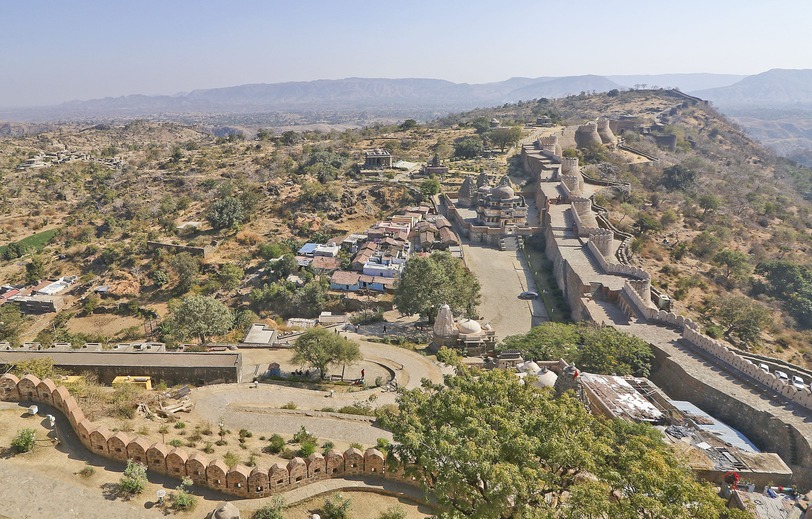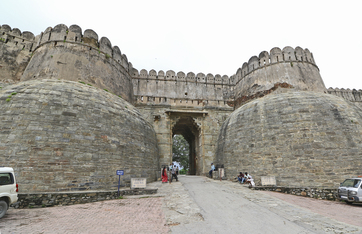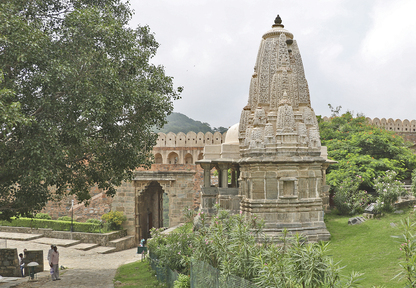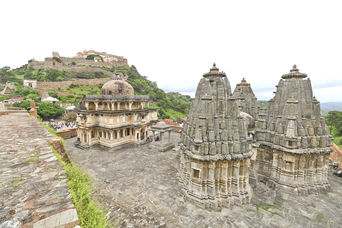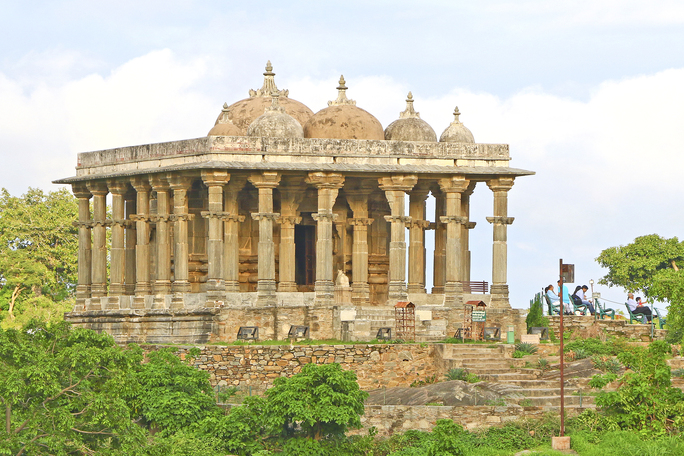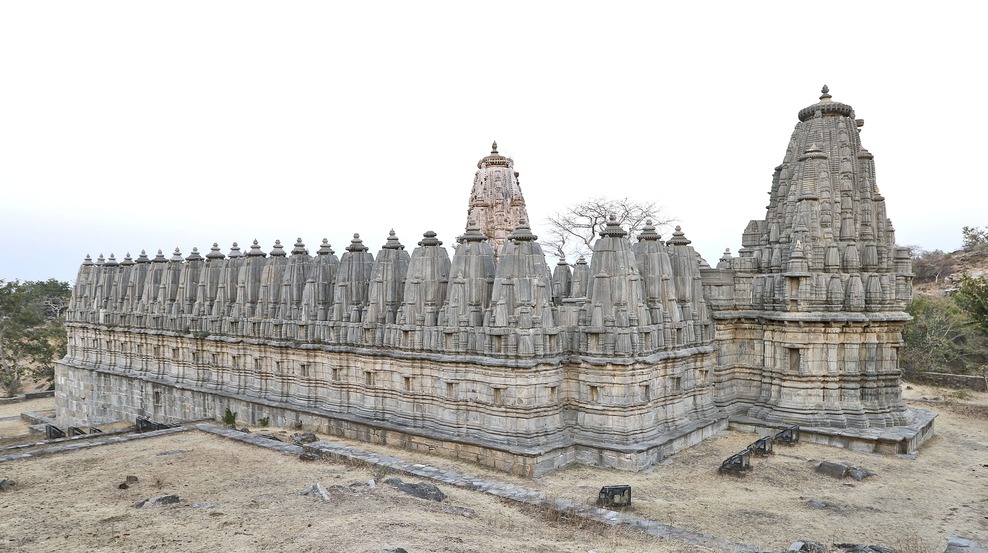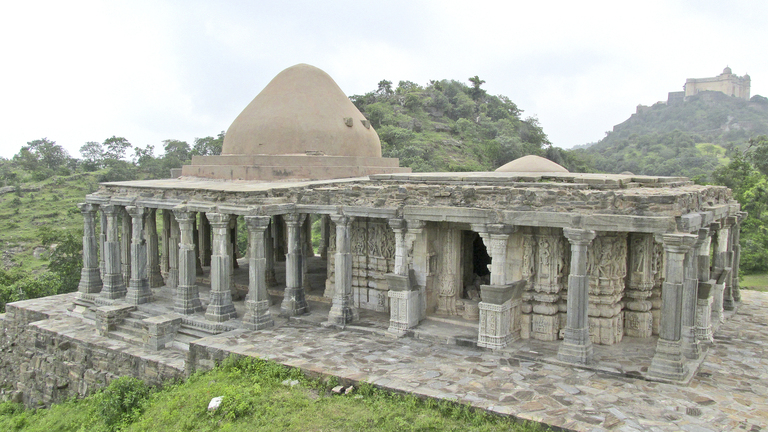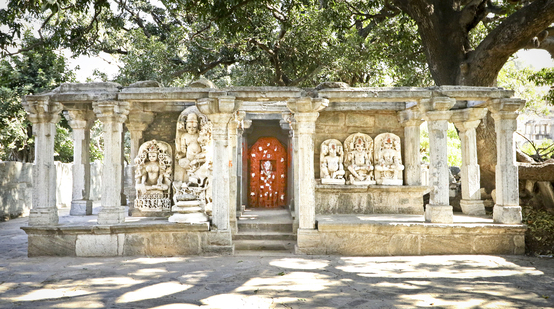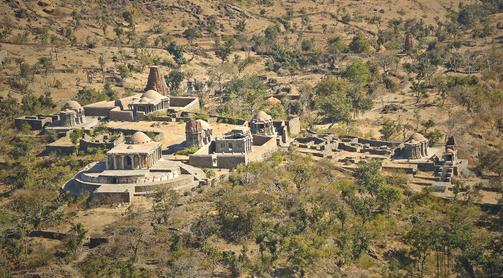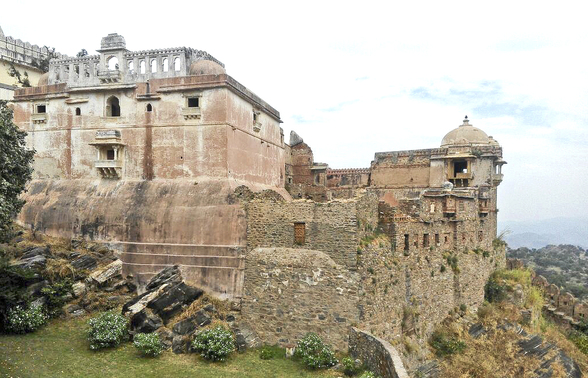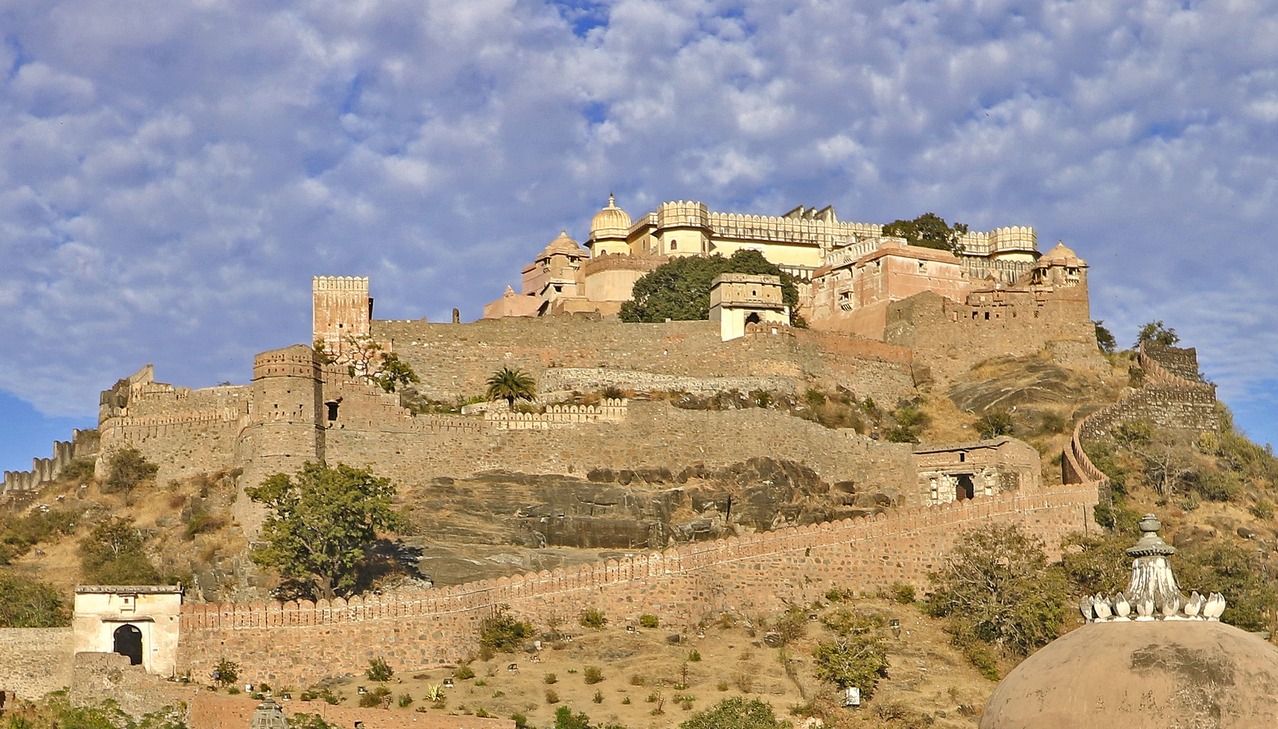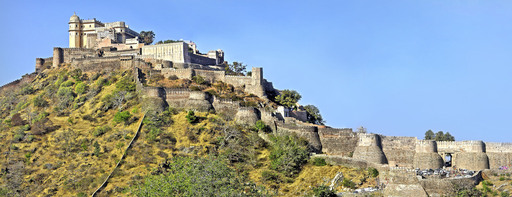
Maharana Mokal's eldest son was Kumbha from his wife Saubhagya Devi. in addition to Kumbha, Maharana Mokal had six sons more, named Khema, Shiva, Sata, Natha, Biram deva and Rajdhar. Nainasi (a court historian) records the names of Rajdhar and Natha as Adu and Gadu. The Rasikpriya commentary on the Geet Govind mentions the name of Apurva Devi as the wife of Maharana Kumbha. The name of Kumbhal Devi is given in the Inscription of Kirtistambha. The ekling inscription has the name of Puvadare of the Gaur caste. one name of queen 'Kashmir de' is available in the Kumbha Karna-Vasant-Vilas Phagu. Maharana Kumbha had 11 sons (Uda, Raimal, Nagraj, Asakaran, Amar singh, Govinddas, Jet singh, Maharawal, Khetsi and Achaldas) and a daughter (Rama Bai). At Kumbhalgarh, when the Maharana was sitting alone near the temple of Mamadeva, Uda (the son) killed him by a dagger. According to the Amar Kavya- Vanshavali, this event took place on the 10 th day of bright half of Magh V.E. 1525 (1468 CE).
Maharana Kumbha extended the boundaries of his state and adopted the epithets of Hindu Raj-Gaj- Nayaka and Hindu-Suratan. During his reign, Sangita-Raj, Geet-Govind, Chandi Shatak, Ekling Mahtmya, Suda- Prabandha Kamraj Ratisar were composed. The temple of Ranakpur was also built during his reign.
Kumbhalgarh is situated amidst Aravalli hills in the Kelwada Tehsil of Rajsamand district about 80 Kms northwest of Udaipur. Its construction is attributed to Rana Kumbha between 1443 and 1458 CE under the supervision of famous architect Mandan. According to local traditions, the ramnants of the ancient castle can be ascribed to Samprati, a jaina prince of second century BCE. The Muslim rulers of Malwa and Gujarat attempted to take over the fort, but due to its strategic location and strong fortifications, it remained invincible. Rana Fateh Singh (1885-1930 CE), one of the greatest builders of the time, constructed Badal Mahal. The important buildings within the fort are Badal Mahal, Kumbha Mahal, Brahmanical and Jain temples, water reservoirs, Baoris and Chhatris, etc. Maharana Kumbha constructed the Kumbhalgarh Fort for defence purposes. He was regularly attacked by the Sultans of Malwa and Gujarat, therefore he needed it. The fortification and rampart is very strong. It is believed that Akbar captured it by adopting fradulent measures. According to Amar Kavya, its construction was started in V.E. 1495 (1438 CE) and completed in V.E. 1515 (1458 CE). The Kirtistambha gives the date of its construction as Chaitra Sukla 13, V.E. 1515 (1458 CE). The Sadari (Godawar) Jain Inscription of V.E. 1508 (1451 CE) and the colophon of Kalpa Sutra dated V.E. 1555 (1498 CE) mention the name of the place as Kumbhalgarh and Kumbhalpur.
There is pucca road from Kelwara to Kumbhalgarh. The first gate is Orath Pole and later Halla Pole and Hanuman Pole comes. In the lower part of the fort, there are some temples, known as Mamadeva's temple, Yajna vedi, Tripurashdeva temple, Samava-saran's temple etc. The Mamadeva temple is famous for its big- mandapas. D.R. Bhandarkar(1915-16) says that originally it was a Chamukha - Jain temple. The Pitaliyadeva Jain temple is four-faced having garbha-griha and sabha mandap. Another Jain temple is Bavan- Jinalaya. It was, perhaps, having 52 Devakulikas but only 40 are now available.
For Katargarh, we have to pass through a road crossing the Bhairava Pole, Nimbu Pole, Chaugan Pole, Pawada Pole and Ganesh Pole. Small palaces of Maharana Kumbha are scattered here. New palaces have also been added by Maharana Fatehsingh. There is birth place of Maharana Pratap here.
